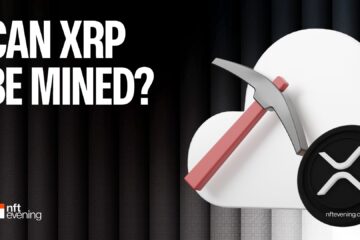What is WalletConnect? It allows you to use QR codes or deep linking to interact with dApps without exposing your private keys, ensuring secure and seamless transactions.
It is also an open-source protocol for securely connecting cryptocurrency wallets to decentralized applications (dApps).
What is WalletConnect?
WalletConnect is a publicly accessible protocol developed to bridge the connection between decentralized applications (dApps) and crypto wallets. By enabling users to connect their wallets with dApps in a secure manner, WalletConnect promotes smooth and protected transactions while safeguarding the privacy of users’ private keys. It serves as an intermediary that enhances interaction between users and decentralized applications, allowing developers to concentrate on building their platforms without jeopardizing the safety of users’ private keys.
Since its inception in 2018, WalletConnect has become widely recognized for providing a reliable and secure method for integrating supported wallets—including Ethereum wallets—across multiple blockchain networks with various dApps. The end-to-end encryption utilized by WalletConnect ensures that private keys remain confidential within your crypto wallet whenever you choose to use services like NFTs or others enabled by WalletConnect.
In essence, WalletConnect stands out as an ideal solution because it enables individuals to smoothly access dApps via their preferred wallet interface, making it perfect for those aiming to improve accessibility across different blockchain environments without compromising security standards.


Source: WalletConnect
How WalletConnect Operates
WalletConnect functions by creating a secure, encrypted session between the user’s wallet and the dApp through either QR codes or deep linking. This method guarantees that critical information like private keys is securely kept within the wallet, preventing exposure to the dApps during transaction activities.
To protect communications between the wallet and dApp, WalletConnect employs both Transport Layer Security (TLS) and end-to-end encryption. It offers an easy solution for linking desktop browser-based dApps with mobile wallets via scanning a QR code.
WalletConnect Technology
WalletConnect Network’s foundational technology more closely resembles the off-chain infrastructure of Web2 than a conventional blockchain setup. It utilizes a database based on permissionless rendezvous hashing, incorporating multiple critical elements. The network’s reliability and resilience in data distribution are underpinned by Service Nodes, which leverage consistent hashing for a distributed database.
To enable secure and uninterrupted transactions, Gateway Nodes are deployed to handle encrypted communications and guide data exchange between wallets and apps. Notably, the Relay Service distinguishes itself by linking users’ wallets with decentralized applications (dApps) through end-to-end encryption. This feature guarantees that sensitive details like transaction hashes or private keys remain concealed from the relay to protect user privacy.
Structured to be completely open for participation, the network permits any individual to operate either a Service Node or Gateway Node – contributing both to an enhanced decentralized internet experience and bolstering security via an open-source connectivity protocol designed for seamless interactions among users.
Network Participants
The WalletConnect Network is supported by a collection of integral contributors, each essential for the network’s operation and security. Those responsible for running the service nodes maintain the network’s foundational storage layer, whereas those overseeing gateway nodes are in charge of secure message transmission and data flow between wallets and applications.
End users utilize hardware wallets to handle their blockchain keys and digital assets across two devices, connecting to this network through the use of WalletKit SDK. Meanwhile, decentralized apps generate activity on the platform with options for direct integration or through existing SDKs. This approach streamlines how applications interact with user wallets.
End users tap into every facility offered within this unified ecosystem—ranging from utilizing wallets to engaging with various apps—all via relay and database nodes that ensure fluidity in connection amongst all parties involved.


Network Participants
Service Nodes
Service nodes play an essential role in the WalletConnect Network by providing a backbone for storing and handling messages that are encrypted from end to end. These nodes employ rendezvous hashing, which guarantees uniform distribution of data throughout the network, thereby increasing its reliability and fault tolerance. Since these service nodes cannot decrypt or access the content within the messages they process, they preserve user privacy.
Technical Architecture
WalletConnect’s framework is tailored to accommodate clients that might be disconnected for substantial durations by employing a “mailbox” approach, which stores messages so they can be accessed once the client reconnects. This design, which uses rendezvous hashing, is based on database technology that has proven to scale effectively in leading databases such as Cassandra and DynamoDB. The nodes are predominantly developed using Rust, enhancing performance and security, while integrating RocksDB for essential lower-level tasks.
There’s ongoing exploration aimed at transforming the database relying on rendezvous hashing into an entirely permissionless structure. A significant upcoming step involves sharing a detailed technical blueprint with the community for evaluation. This strategic combination of proprietary solutions with tried-and-tested components offers a user-friendly and secure method for handling sensitive information without compromising network integrity or safety.
WCT Token Information
The WalletConnect ecosystem heavily relies on the WCT token for its dual purpose: it functions as a reward system and also facilitates governance within the network. A hard cap has been set at 1 billion tokens for the initial supply of WCT, which supports the onchain user experience (UX) ecosystem by allowing participants to engage in governing the network while obtaining rewards.
Subsequent subsections will delve deeper into how this token operates and is allocated, both vital aspects that contribute significantly to maintaining secure and effective functionality across the network.
Token Allocation
The distribution of WCT tokens is structured to bolster different components within the WalletConnect network. The WalletConnect Foundation receives 27% of the tokens, while airdrops and team members each receive 18.5%. Incentives make up 17.5%, early supporters are granted 11.5%, and essential development work receives a provision of 7%.
Such an arrangement guarantees that every vital sector obtains sufficient resources, thereby fostering the expansion and resilience of the ecosystem.


Source: WalletConnect
Token Utilities
Within the WalletConnect Network, WCT tokens fulfill four key roles. At its inception, usage of the network is free of charge. Token holders possess voting rights, which could enable them to introduce service fees for aspects like relay utilization at a later time. To foster engagement and bolster both security and efficiency within the network, WCT tokens are awarded as incentives.
Staking these WCT tokens grants participants not only rewards but also governance privileges—empowering them with influence over how the network progresses. Governance stands out as a vital component since it permits owners of WCT to have their voices heard on various updates and decisions through casting votes—thereby ensuring that control over the course taken by the network lies in the hands of its community via a decentralized approach to governance.
WCT Season 1 Airdrop
WalletConnect Network has established a method for recognizing and compensating its most engaged and knowledgeable users through the Season 1 WCT airdrop. This strategy involves employing an intricate scoring mechanism to pinpoint individuals who are highly involved with and have a comprehensive grasp of the network.
Such identified users have been called upon to assume crucial roles within the ecosystem, gaining chances to be involved in governance as well as staking activities. In this initial Season 1 dispersal event, WalletConnect will allocate an aggregate of fifty million WCT tokens to three distinct groups: Community Distribution, Independent Contributors, and Strategic Partners.
Airdrop Allocation
In the initial airdrop for Season 1, a total of 50 million WCT tokens are distributed among three specific groups. The most substantial portion, amounting to 30 million WCT, is designated for Community Distribution. This is succeeded by both Independent Contributors and Strategic Partners who are equally allocated with 10 million WCT apiece. By employing this distribution approach, WalletConnect aims to incentivize its ecosystem’s most active and crucial members, thereby nurturing an environment that encourages cooperation and mutual support.


Airdrop Allocation
Setting Up WalletConnect
Users need to install a mobile wallet application, like Trust Wallet, from their device’s app store to set up WalletConnect. When accessing a dApp via a browser, users should select the WalletConnect option after clicking ‘Connect Wallet,’ which will generate a QR code for linking. Using the ‘Scan QR code’ feature in the Trust Wallet app, users can capture the QR code displayed by the dApp to initiate the connection process.
After scanning the QR code, Trust Wallet prompts users to manually approve the connection request, allowing them to confirm before proceeding. Once the wallet app approves the connection, the dApp identifies the wallet as connected, allowing users to initiate transactions.
This secure connection process ensures that private keys remain on the user’s device, providing a safe and efficient way to securely connect with dApps through secure connections and encrypted connections while keeping private keys.
Using WalletConnect with Mobile Wallets
Using WalletConnect with mobile wallets is a simple and secure process. Use WalletConnect. The wallet connect works.
Here are the steps to follow.
- Install your preferred wallet application, such as Trust Wallet, on your mobile device.
- Visit the dApp’s platform and click ‘Connect Wallet.’
- Select the WalletConnect option to initiate the connection.
- The dApp will generate a QR code, which you must scan using the Trust Wallet app.
By following these steps, you can easily connect your mobile wallet to the dApp.
After scanning the QR code, the wallet prompts the user to approve the connection request. Once approved, the connection is established, allowing users to engage with the dApp securely. This process ensures secure and seamless transactions between the user’s wallet and the dApp, maintaining privacy and security throughout. To scan a QR code, users can follow the prompts provided by their wallet.
Using WalletConnect with Desktop Wallets
Establishing a connection between a desktop wallet and WalletConnect follows an analogous procedure. As an instance, when users intend to link Ledger Live with a decentralized application (dApp), they first must take the QR code shown by the dApp upon selecting WalletConnect and then input this code into Ledger Live, setting off the linkage process with said dApp. Notably, Ledger Live facilitates connections for accounts on Ethereum, Polygon, and Binance Smart Chain via WalletConnect.


Source: Uniswap
It’s crucial for both security purposes and operational effectiveness that users diligently manage their WalletConnect sessions. Within Trust Wallet’s app interface lies the option to inspect active dApp connections as well as sever them accordingly. By providing this functionality within the app itself, it guarantees that users can assert dominion over their existing links, effortlessly dismissing any superfluous or undesired ones whenever necessary.
How to Farm WCT on Binance Launchpool
Acquiring WCT on the Binance Launchpool is an effortless task. To begin, access your account on Binance. Move to “Trade,” proceed to “Spot,” and exchange your chosen stablecoin for BNB by placing a limit order at the most favorable price.
Subsequently, venture over to “Simple Earn” and opt for Flexible Staking with your amassed BNB tokens to accrue WCT token rewards. Once staking concludes, the Launchpool initiative will distribute tokens hourly.
Learn more: WalletConnect (WCT) will be listed on Binance Launchpool. How to farm WCT on Binance Launchpool?


Benefits of WalletConnect
WalletConnect provides numerous advantages, chief among them enhanced protection. By storing private keys on the user’s mobile device, WalletConnect ensures they remain shielded from browsers or dApps—greatly reducing the risk of security violations. Every transaction necessitates approval by the user, thereby adding an extra safeguard and reinforcing security.
Crafted to facilitate secure and frictionless interactions with dApps, WalletConnect employs QR codes for effortless connections that even those with minimal tech expertise can easily manage. It also extends compatibility across a diverse array of wallets and blockchain networks, promoting greater interoperability within an increasingly interconnected ecosystem.
One notable feature is its capacity to permit smooth transitions between various wallets without disruption. With WalletConnect, users have the convenience of linking multiple wallet types across different blockchain platforms—a level of adaptability not always present in other offerings—that enhances its appeal among many individuals seeking a reliable wallet protocol solution.
Common Issues and Troubleshooting
Even when utilizing the well-constructed WalletConnect, users may run into regular challenges, such as connectivity problems. Should this issue arise for you, a suggested solution is to sever any active connections through your settings before refreshing the decentralized application (dApp).
On devices running iOS, particularly if they are operating on iOS 15, users may experience persistent connection issues in Mobile Safari due to a software glitch. To tackle these issues effectively, it’s often necessary to clear out all prior sessions associated with WalletConnect and try establishing the connection once again.
Difficulties involving QR code links are typically addressed by resetting your web browser’s local storage.
To maintain heightened security standards, WalletConnect automatically terminates sessions after they’ve been inactive for some time. In cases where your session times out or becomes disconnected for other reasons, you have the option of simply scanning the QR code again to re-establish your connection.
Comparing WalletConnect to Other Solutions
Upon evaluating WalletConnect against other solutions, several distinctive features become apparent. It has established connections for an impressive tally of over 23 million wallets and 6,000 decentralized applications (dApps), which underscores its extensive acceptance and trustworthiness in the space. With more than 500 wallet apps already integrated into its system, WalletConnect sustains a wide-ranging ecosystem.
Contrary to MetaMask, which is predominantly utilized as a browser extension, WalletConnect uniquely employs QR codes to establish secure links between mobile wallets and dApps. This feature offers users a distinctively safe avenue for creating these important digital associations. It boasts compatibility across various blockchain platforms such as Ethereum, Solana, and BNB Chain—thereby enhancing interoperability significantly.
For full functionality of the protocol within decentralized applications (dApps), support for version 2 of WalletConnect is imperative. Alternative techniques, such as using MetaMask, might be required in the absence of this integration. Thanks to its broad support encompassing several types, including mobile devices desktops, and browsers, WalletConnect emerges as not only versatile but also the favored option among numerous users looking for connectivity solutions.
Future Developments in WalletConnect
In the coming year of 2025, WalletConnect is poised to unveil a series of noteworthy enhancements. The introduction of WalletConnect v2 promises to revolutionize the user experience by enabling simultaneous connections between multiple accounts and decentralized applications (dApps), thereby significantly improving functionality. Smart Sessions are set to be rolled out, offering users seamless ongoing interactions with various apps without repeated authentication requirements.
The forthcoming update will also include Link Mode, which aims at streamlining reconnection processes for wallets and dApps—this feature is anticipated to notably refine how new connections are established, consequently elevating the overall user journey. WalletConnect intends to expand its array of connection options to bolster both decentralization and security within its ecosystem.
Lastly, emphasis on on-chain governance will become more pronounced as token holders gain voting rights concerning substantial network developments. These advances demonstrate a commitment not only to progression but also to engaging the community through the protocol’s open-source framework. Guaranteeing continual evolution based on collaborative input from stakeholders.
Summary
WalletConnect stands out as an influential and reliable protocol designed for linking crypto wallets with decentralized applications (dApps), thereby improving the user interface through steadfast connections. It accommodates numerous wallets and various blockchain infrastructures, promoting an interconnected ecosystem.
The WCT token is pivotal within this network, providing incentives, staking options, and control over governance decisions. As WalletConnect continues to evolve with new updates and enhancements regularly being made, it’s poised to maintain its essential role in shaping the decentralized web landscape.
Frequently Asked Questions (FAQ)


How does WalletConnect ensure the security of my private keys?
WalletConnect ensures the security of your private keys by utilizing end-to-end encryption, keeping them on your device and never exposing them to decentralized applications or browsers. This approach effectively protects your keys from unauthorized access.
What should I do if my WalletConnect connection fails?
If your WalletConnect connection fails, disconnect all active sessions in Settings, reload the app, and re-scan the QR code.
For iOS users, resetting the local storage on the web browser may also be necessary to resolve the issue.
Can I use WalletConnect with both mobile and desktop wallets?
Yes, you can use WalletConnect with both mobile and desktop wallets, facilitating smooth interactions across various platforms.
What are Smart Sessions in WalletConnect v2?
WalletConnect v2’s Smart Sessions offer users the advantage of sustained connections across multiple applications, eliminating the need for frequent re-authentication and thus simplifying the user experience by making interactions more seamless.
How are WCT tokens allocated?
WCT tokens are allocated with 27% to the WalletConnect Foundation, 18.5% for airdrops, another 18.5% to the team, 17.5% for rewards, 11.5% to previous backers, and 7% for core development.
This ensures a balanced distribution across various stakeholders.
 Bitcoin
Bitcoin  Ethereum
Ethereum  Tether
Tether  XRP
XRP  USDC
USDC  Wrapped SOL
Wrapped SOL  Lido Staked Ether
Lido Staked Ether  TRON
TRON  Dogecoin
Dogecoin  Cardano
Cardano  Figure Heloc
Figure Heloc  WhiteBIT Coin
WhiteBIT Coin  Wrapped stETH
Wrapped stETH  Bitcoin Cash
Bitcoin Cash  Wrapped Bitcoin
Wrapped Bitcoin  USDS
USDS  Chainlink
Chainlink  Wrapped eETH
Wrapped eETH  Binance Bridged USDT (BNB Smart Chain)
Binance Bridged USDT (BNB Smart Chain)  LEO Token
LEO Token  WETH
WETH  Hyperliquid
Hyperliquid  Stellar
Stellar  Monero
Monero  Zcash
Zcash  Coinbase Wrapped BTC
Coinbase Wrapped BTC  Ethena USDe
Ethena USDe  Litecoin
Litecoin  Sui
Sui  Avalanche
Avalanche  Hedera
Hedera  Shiba Inu
Shiba Inu  sUSDS
sUSDS  USDT0
USDT0  Dai
Dai  Mantle
Mantle  Toncoin
Toncoin  World Liberty Financial
World Liberty Financial  PayPal USD
PayPal USD  Cronos
Cronos  Ethena Staked USDe
Ethena Staked USDe  Uniswap
Uniswap  Polkadot
Polkadot  MemeCore
MemeCore  Aave
Aave  Bittensor
Bittensor  USD1
USD1  Canton
Canton 


